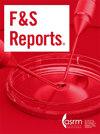Assisted sperm fusion insemination improves fertilization rates and increases usable embryos for transfer: a clinical sibling-oocyte study
IF 2.2
引用次数: 0
Abstract
Objective
To evaluate the impact of assisted sperm fusion insemination (ASFI), a microinsemination method using sperm bound to the zona pellucida (ZP-sperm) without penetrating the oocyte membrane, compared with conventional intracytoplasmic sperm injection (C-ICSI), on fertilization and embryonic development.
Design
Prospective clinical sibling-oocyte study.
Subjects
A total of 197 oocytes from 24 patients who underwent 35 oocyte retrieval cycles from January 2023 to April 2024 were analyzed. Patients who underwent retrieval of both, at least 2 metaphase II (MII) oocytes and at least 1 immature or degenerated oocyte, were recruited.
Intervention
Metaphase II oocytes were alternately allocated to 2 groups: ASFI and C-ICSI groups. To obtain ZP-sperm for ASFI, immature or degenerated oocytes were incubated with 10,000 motile sperm for 3 hours. After harvesting the ZP-sperm, it was pressed onto the membrane of an MII oocyte for 10 seconds in the ASFI group. Conventional intracytoplasmic sperm injection was performed conventionally in the C-ICSI group.
Main Outcome Measures
The rates of 2 pronuclei (2PN), degeneration, blastocyst formation, and usable embryos, defined as the total number of transferred or cryopreserved embryos divided by the number of MII oocytes, were compared between the 2 groups.
Results
The 2PN rate of the ASFI group was 88.0% (73/83), which was significantly higher than that of the C-ICSI group (70.2% [80/114]). In addition, a significantly lower degeneration rate was observed in the ASFI group (0% [0/83]) than in the C-ICSI group (8.8% [10/114]). The blastocyst formation rate was equivalent in the 2 groups (ASFI group, 63.9% [39/61]; C-ICSI group, 62.0% [44/71]). However, the usable embryo rate was significantly higher in the ASFI group (45.8% [38/83]) than in the C-ICSI group (28.1% [32/114]).
Conclusion
The ASFI group yielded significantly higher 2PN and lower degeneration rates than the C-ICSI group. Consequently, the ASFI group experienced a higher number of embryos usable for implantation, although there was no significant difference in the blastocyst formation rate between the 2 groups. Further studies with a larger number of cases will be needed for more general application of these findings.
辅助精子融合人工授精提高受精率,增加可用胚胎移植:一项临床兄弟姐妹卵母细胞研究
目的评价精子与透明带结合而不穿透卵母细胞膜的辅助精子融合受精(ASFI)与常规胞浆内单精子注射(C-ICSI)相比对受精和胚胎发育的影响。前瞻性临床兄弟姐妹卵母细胞研究。研究对象对2023年1月至2024年4月接受35次卵母细胞回收周期的24例患者共197个卵母细胞进行分析。招募了至少2个中期II (MII)卵母细胞和至少1个未成熟或变性卵母细胞的患者。中期II期卵母细胞交替分为2组:ASFI组和C-ICSI组。为了获得用于ASFI的zp精子,将未成熟或退化的卵母细胞与10,000个活动精子孵育3小时。在收获zp精子后,ASFI组将其压在MII卵母细胞的膜上10秒。C-ICSI组常规行胞浆内单精子注射。主要观察指标比较两组间的2原核(2PN)、变性、囊胚形成和可用胚胎(移植或冷冻保存胚胎总数除以MII卵母细胞数量)的比率。结果ASFI组2PN率为88.0%(73/83),显著高于C-ICSI组(70.2%[80/114])。此外,ASFI组的退变率(0%[0/83])明显低于C-ICSI组(8.8%[10/114])。两组囊胚形成率相当(ASFI组为63.9% [39/61];C-ICSI组62.0%[44/71])。然而,ASFI组的可用胚胎率(45.8%[38/83])明显高于C-ICSI组(28.1%[32/114])。结论ASFI组2PN明显高于C-ICSI组,退变率明显低于C-ICSI组。因此,ASFI组可用于着床的胚胎数量较多,尽管两组之间胚泡形成率无显著差异。为了更普遍地应用这些发现,需要对更多的病例进行进一步的研究。
本文章由计算机程序翻译,如有差异,请以英文原文为准。
求助全文
约1分钟内获得全文
求助全文

 求助内容:
求助内容: 应助结果提醒方式:
应助结果提醒方式:


